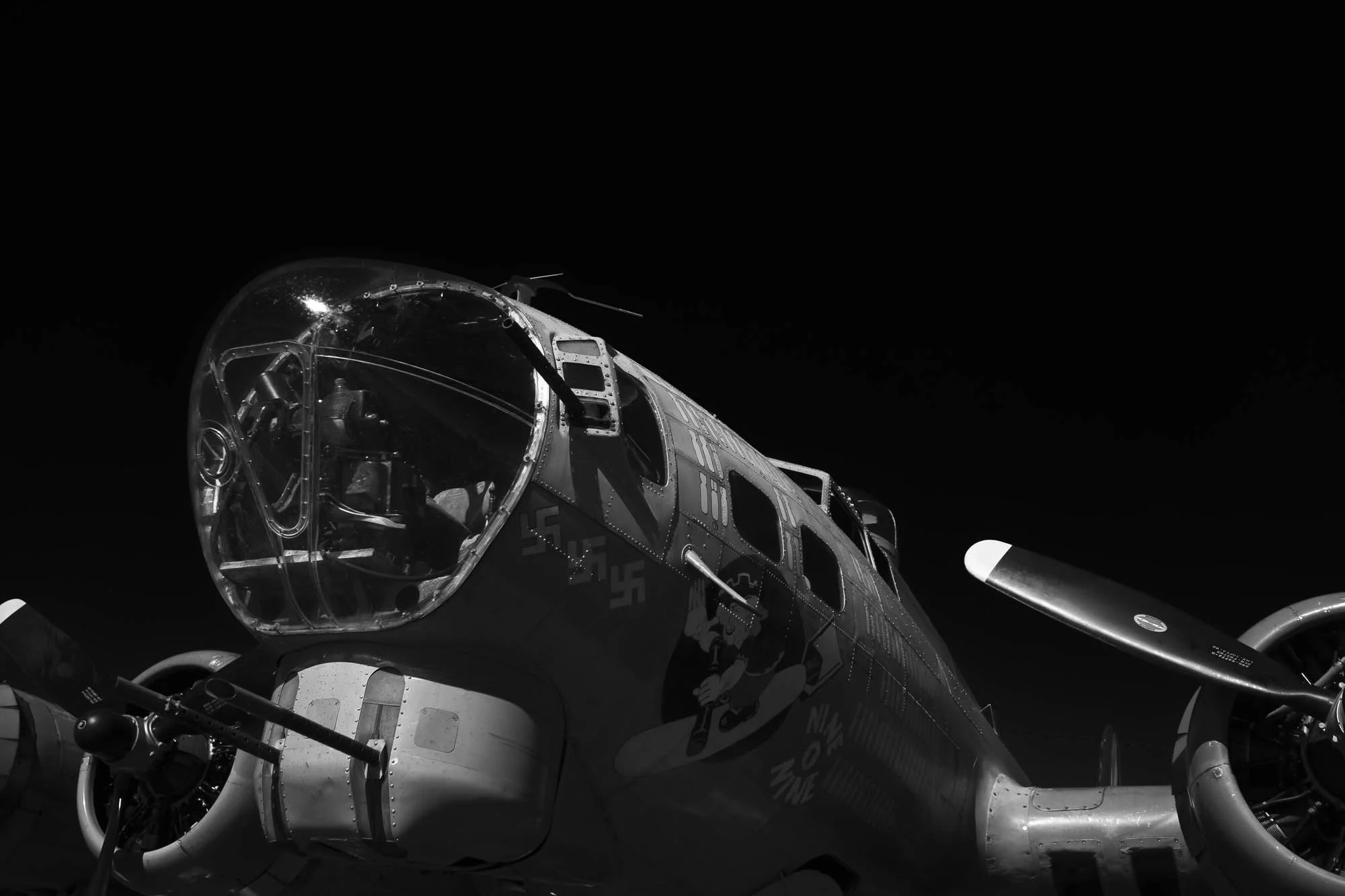
Nine-O-Nine
In September of 2017, Beverly (MA) Regional Airport hosted the Collings Foundation’s “Wings of Freedom Tour,” which featured several vintage WWII military aircraft, including a B-17 Bomber called the Nine-o-Nine. I attended the living history show with my camera and was instantly drawn to the Nine-o-Nine and even took advantage of the opportunity to tour the interior of the plane. The resulting images are presented here in a stark black and white portrait.
Flying Fortress
The B-17 was designed by Boeing in the late 1930s. It boasted four engines to boost performance and lift. It’s formidable array of weaponry earned it the nickname “Flying Fortress.” It could carry large bomb loads at high altitudes and was designed to withstand heavy damage, often returning safely even when severely hit.
Combat History
This specific variant was the B-17G. It was built in 1945, too late for combat. It was later used by the United States Air Force for nuclear test research during the early Cold War. The plane was sold for scrap in 1965 and restored to air worthiness in 1977. It became part of the Collings Foundation fleet in 1986 and repainted as the Nine-o-Nine in honor of the original from the 91st Bomb Group.
Instrument Panel
The original Nine-o-Nine flew an incredible 140 combat missions during World War II, which is believed to be an Eighth Air Force record for most missions completed without loss to the crews that flew it.
The Nine-o-Nine dropped a total of 562,000 pounds of bombs over Germany and Nazi-occupied territories. It took part in major bombing raids, including 18 missions over Berlin.
Nose Gunner
The forward compartment of the B-17 was cramped, unpressurized, and unheated. Missions were often flown at altitudes above 25,000 feet, where the air temperature dropped below freezing, requiring electrically heated suits and oxygen masks. The nose gunner had an extraordinary field of view through a Plexiglas enclosure but minimal protection from enemy fire or flak bursts, making the position one of the most hazardous aboard the aircraft.
Nose Gunner View
The nose gunner in a B-17 Flying Fortress was one of the most critical and vulnerable positions on the aircraft. Stationed at the very front of the bomber, he was responsible for defending against head-on attacks—the most dangerous assault angle German fighters could take during World War II.
The nose gunner operated machine guns to protect the plane from frontal attack, aided in aiming and releasing bombs through the Norden bombsight, and coordinated with the naviogator, who sometimes operated the “cheek” guns on the sides of the nose during combat
Fate
Two years after its visit to Beverly Airport, this specific B-17G crashed after takeoff at Bradley International Airport in Connecticut during a Wings of Freedom event. Seven people were killed.
Legacy
Many B-17 crew members received military honors and 17 received the Medal of Honor, the highest military decoration awarded by the United States.
I highly recommend you check out the Apple mini-series, Masters of the Air. It captures the service and sacrifice of the 100th Bomb Group, the “Bloody Hundreth,” unit of American bomber crews who flew a fleet of B-17s as part of the Eighth Air Force in eastern England during World War II. Trailer below.
Full disclosure, ChatGPT was used as a research tool and for some of copy for this story.
Comments
I’d love to hear your comments — complimentary or critical.
